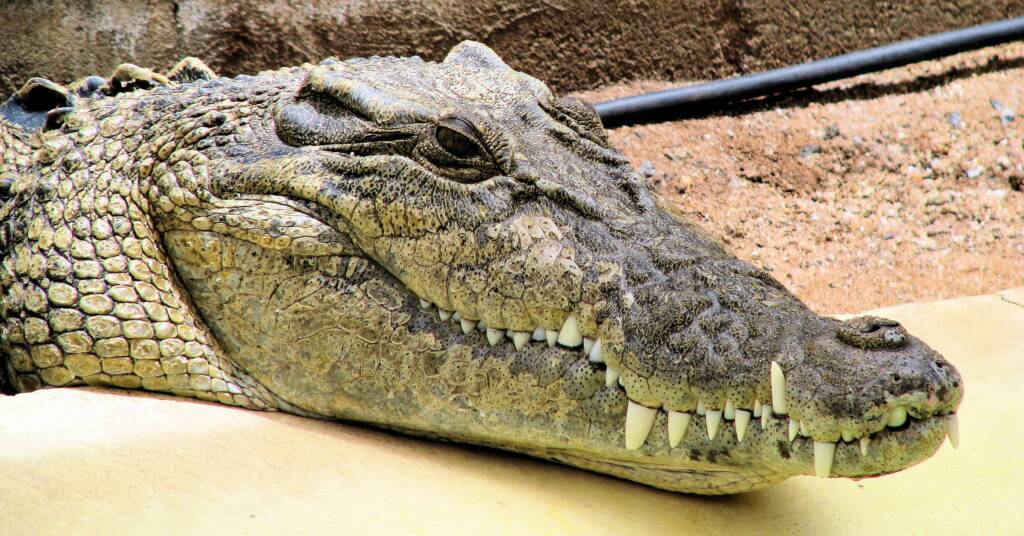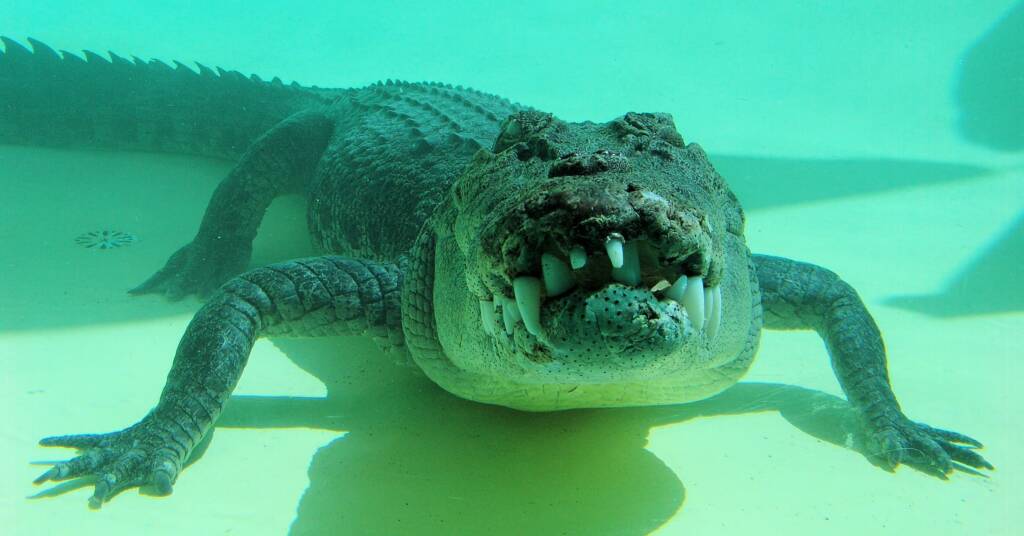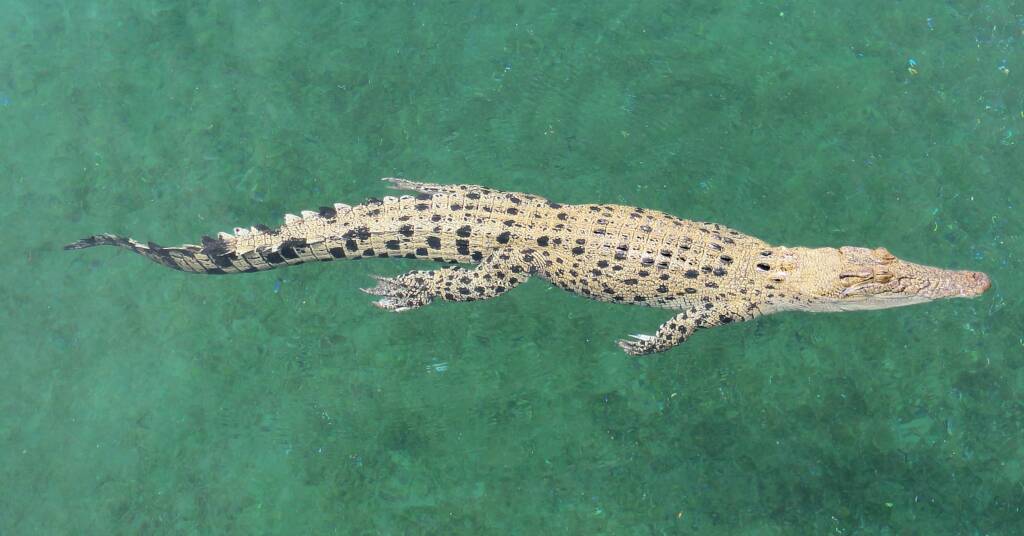ReptilesCentral Netted Dragon Ctenotus leonhardii Ctenotus saxatilis Crocodile Geckos Gidgee Skink Goanna, Monitor, Perentie Inland Bearded Dragon Lined Firetail Skink Long-nose Dragon Serpentes Thorny Devil Yellow-Bellied Water Skink (Eulamprus heatwolei)
In the Northern Territory (NT), specifically up in the Top End are the Saltwater Crocodiles, Crocodylus porosu. Crocodiles have been around for 200 million years, descendant from the dinosaur age.
Common Name
Saltwater crocodiles, estuarine crocodile, saltie and croc. There are also many different Indigenous language names for saltwater crocodiles.
Dungalaba – crocodile, and a totem for the Larrakia people.
Awurrapun – the Crocodile Dreaming Story or Crocodile, in the Batyamal (also known as Batjamalh) language from the Daly River region.

The saltwater crocodile is the largest living reptile species that can pose a serious threat to humans. Whilst females reach maturity around 2.3 metres in length, the male crocodiles mature at around 3.3 metres. Crocodiles can grown bigger then that with one being caught in Australia in a net on the Mary River in 1974, measuring 6.4 metres. Saltwater crocodiles reach sexual maturity at 12 years for females and 16 years for males.
Saltwater crocodiles have evolved special characteristics that make them good predators. Large saltwater crocodiles can reduce their heart rate to two to three beats per minute, enabling them to stay underwater for up to one hour. This allows themn to silently wait underwater until the prey approaches close to them, especially at the water edges.
Crocodiles have a special transparent eyelid that protects the crocodile’s eye when underwater, which means that they can still see when they are completely submerged. In addition they have special nerve endings on their jaws and on the underside of their body that help them to detect the movement of prey in the water.
The tail of a crocodile is solid muscle and a major source of power, making it a strong swimmer. This allows them to make sudden lunges out of the water to capture prey. These strong muscles also mean that crocodiles can move faster than humans can on land for short bursts of time.
Crocodiles regularly lose teeth, but they have a second tooth sitting in reserve underneath the external tooth, which will replace the lost tooth.
There are more saltwater crocodiles in the NT than Queensland and Western Australia (WA). Crocodiles are also protected under NT, Australian and international laws.
Crocodiles have cultural and social significance to Aboriginal and Torres Strait Islander peoples.
Source: Wildlife in NT – Crocodiles





Did you know
The Crocodile Islands are an archipelago off the coast of northeast Arnhem Land, home to the Yan-nhaŋu and other peoples of the wider Yolŋu nation. The main island is Yurruwi, where the major community of Milingimbi is located. Other notable islands in the group include Rapuma, Murruŋga, Gurriba and Laŋarra (Howard Island).
- Scientific classification
- Kingdom: Animalia
- Phylum: Chordata
- Class: Reptilia
- Order: Crocodilia
- Family: Crocodylidae
- Genus: Crocodylus
- Species: C. porosus
- Binomial name: Crocodylus porosus
Footnote & References
- AIATSIS – The Crocodile Islands, Northern Territory https://aiatsis.gov.au/exhibitions/crocodile-islands-northern-territory
- Wildlife in NT – Crocodiles https://nt.gov.au/environment/animals/wildlife-in-nt/crocodiles
ReptilesCentral Netted Dragon Ctenotus leonhardii Ctenotus saxatilis Crocodile Geckos Bynoe’s Gecko Eastern Tree Dtella Southern Spotted Velvet Gecko Gidgee Skink Goanna, Monitor, Perentie Black Headed Goanna Perentie Pygmy Mulga Goanna Sand Goanna Inland Bearded Dragon Lined Firetail Skink Long-nose Dragon Serpentes Blind Snake Central Carpet Python Children’s Python Stimson’s Python Thorny Devil Yellow-Bellied Water Skink (Eulamprus heatwolei)
